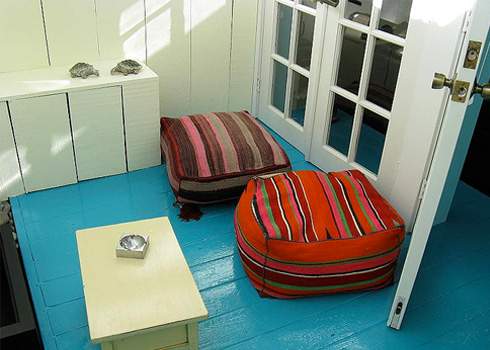Mindfulness is being developed to relieve the suffering of a host of different conditions, from eating disorders to anxiety in pregnancy, from reducing students’ stress to speeding up the healing process of psoriasis. These are all a wonderful flowering of applications of mindfulness, but keep in mind the original purpose and vision of mindfulness as a way of relieving all suffering, both yours and others, and developing a greater sense of compassion. Such a large and positive vision enlarges the practice of mindfulness for those who share those possibilities.
Finding what you’re looking for
Meditative visualisation is a helpful exercise that may give you an insight into what your true and deep intentions in practising mindfulness are. When I first used this meditation, I was surprised and fascinated by the insights into my own deep motives.
You can read through these instructions and practise on your own or record them as an audio and listen to it as you practise. Alternatively, ask a friend to read out the meditation to you slowly.
Afterward, do the writing exercise described in the next section.
Discovering your intention: Meditation
Find a comfortable position seated in a chair or sofa, or lying down. Choose a position in which you feel cosy and comfortable. Close your eyes.
Imagine that you’re sitting by the side of a beautiful expanse of water—a lake or lagoon, or perhaps a still, calm ocean. The place can be somewhere you’ve been before, seen before, or may be completely created in your imagination—it doesn’t matter which. Find a place where you feel calm and relaxed. The lake may have majestic trees around one side, and stunning mountains in the distance. The temperature is just about perfect for you, and a gentle breeze ensures that you feel refreshed. A flock of birds is flying across the horizon and you can sense a freshness in the air. Your body feels relaxed and at ease.
You look down and notice a pebble. You pick it up and look at it. It has a question engraved on it. The question is: ‘Why do I want to practise mindfulness?’ You look carefully at the question as you hold the pebble gently in your hand.
You throw the pebble out into the water. You watch the pebble as it soars through the air in an arc almost in slow motion and eventually makes contact with the surface of the water. You see the circular ripples radiate out. As the pebble contacts the water you continue to reflect on the question, ‘Why do I want to practise mindfulness?’.
The pebble moves down into the water. You’re able to see the pebble as it falls deeper and deeper into the water. As it continues to smoothly fall downwards in the deep water, you continue to watch it, and you continue to reflect on the question, ‘Why do I want to practise mindfulness?’. You keep watching as the pebble falls, and you keep reflecting on the question.
Eventually, the pebble softly makes contact with the bottom and settles there. The question ‘Why do I want to practise mindfulness?’ is still visible. Reflect on that question for a few more moments.
Bring the visualisation meditation to a close, noticing the physical sensations of your body, taking a slightly deeper breath and, when you’re ready, slowly opening your eyes. Record what you discovered in your journal, if you have one. This may help to reveal further insights as you write.
No right or wrong answers exist for this ‘intention’ meditation. Some people get clear answers about what they hope to get out of practising mindfulness, and others reflect on the question, yet no answers arise. Some people find ones but, as the pebble falls deeper, their reasons to practise clarify and deepen too. If the meditation was helpful, great; if not, don’t be concerned.
Discovering your intention: Sentence completion
Take a piece of paper, or your journal, and write as many answers as you can to the following questions in one minute, without thinking about it too much:
I want to practise mindfulness because…
I am hoping mindfulness will give me…
If I am more mindful I will…
The real reasons I want to practise mindfulness are to…
Ultimately mindfulness will give me…
Mindfulness is…
These sentence completion exercises may help to clarify your motivation and intentions of mindfulness.
Now read and reflect on your answers. Did any of your answers surprise you? Why did they? You may have to come back to these answers when you’re struggling to motivate yourself to meditate—reading your answers can then be a way of empowering yourself to practise some meditation.
This excerpt from Mindfulness for Dummies has been posted with permission. To buy the book, click here.
Shamash Alidina, M.Eng. M.A.(Ed) is the bestselling author of Mindfulness for Dummies, and has taught mindfulness in the UK for more than a decade. For more, visit his personal site, ShamashAlidina.com.






